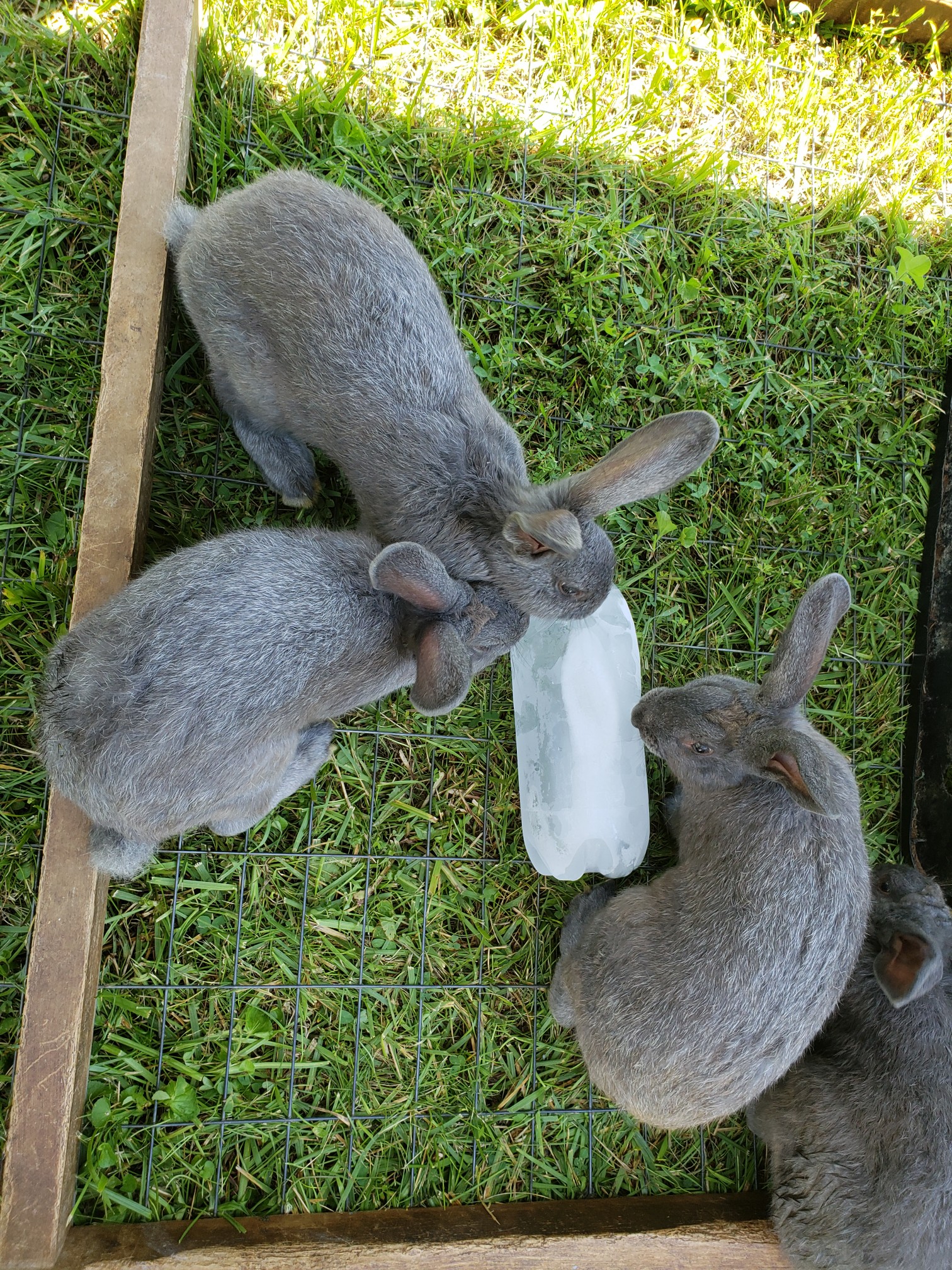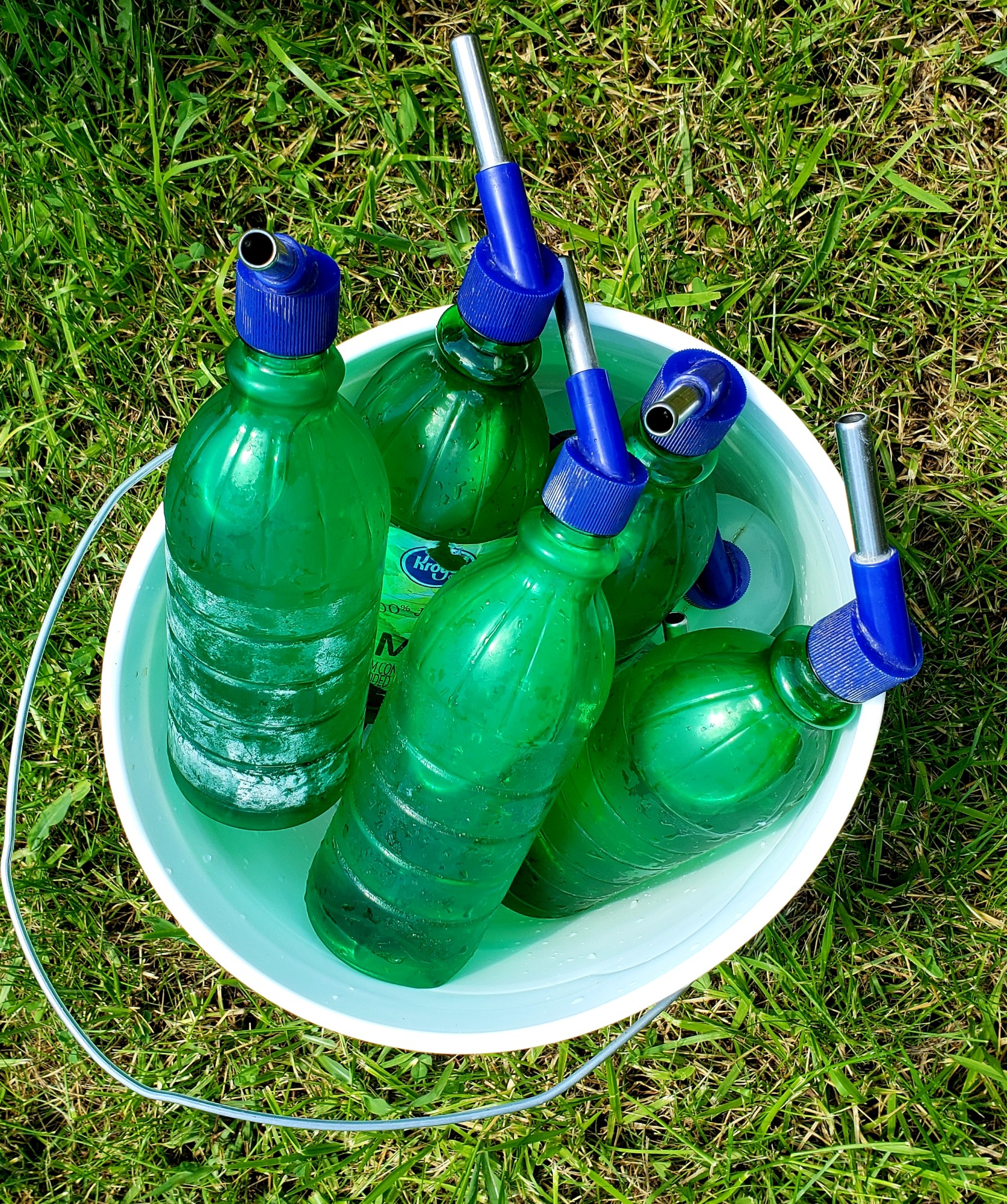
It’s still really hot here – like sweat running in rivulets down your face after about 5 minutes in the heat hot. Even the breeze (when there is one) is hot. Ugh. Now imagine that you’re wearing a thick fur coat and your primary means of dissipating body heat is from your ears, through your breath, or your nasal mucosa…and your sweat glands don’t really do the job. Sounds perilous, right? For outdoor rabbits, it can be. When the heat index (temperature + relative humidity) is this high, we take extra steps to help rabbits survive the heat.
In our experience, rabbits generally fare much better in the cold than the heat. Once temperatures reach 85+, the heat poses a real risk to most domestic rabbits because – housed in a hutch or even a tractor – they don’t have the option of escaping into a cool underground burrow, as they would in the wild. Our tractors allow them to stretch out on the cool, often damp, grass, and they have shade from the roof and from their bin houses. Still, the hot humid air sometimes doesn’t come with a cooling breeze, and they need some additional help.
Here are some methods we employ to help our rabbits survive high Heat Index days.
Shade: locating rabbits’ housing in a shady area will go a long way toward helping them handle the heat. Trees and buildings that don’t block airflow can be good sources of shade. In addition, shade cloth, a breathable plastic mesh fabric with varying degrees of UV-blocking capability, can be deployed to provide shade where other sources aren’t available. We’ve found shade cloth to be much better than plastic tarps for providing shade, and we use it for our poultry, too.
Frozen water bottles: we keep 2 liter plastic bottles full of water on hand for hot weather. We fill them to the shoulder of the bottle (about 3″ from the top to allow for expansion, or you’ll discover burst bottles), freeze them in our chest freezer and then, during peak heat, put them in the tractors with the rabbits. They’ll lick the frost off the outside of the bottle and also stretch out along them to cool off. When they melt, we just pop them back in the freezer and re-freeze them.

Sprinkler: a decent rainfall can really cool things off, but when Nature’s not forthcoming with precipitation, we can approximate the effect with a oscillating sprinkler that moves the spray back and forth over the top of the tractors. This creates a mist and also dampens the ground around the tractors. The rabbits prefer this approach to being misted directly, and will receive some hydration through licking the water off their paws.
Water: ensuring that the rabbits have cool water means that their water bottles need to be checked throughout the day and refilled or replaced (if warm), as needed. We’ve noticed that the rabbits tend to do most of their drinking in the evening and overnight, even when it’s not ridiculously hot…but they will drink a surprising amount, when they do.

Bring them indoors: we monitor the rabbits particularly closely when the heat index exceeds the mid-90s; from what we’ve observed, young rabbits and adult bucks generally seem to handle hot weather better than adult does (though hot weather can cause temporary sterility in bucks). The heat index is forecasted to reach 105-110 degrees today, so we’ve erred on the side of caution and brought our adult does inside until the weather cools back down. I would definitely ensure that any pregnant does are brought inside, too, if at all possible, as pregnancy is a risk factor for heat stroke in rabbits.
In dangerously hot weather, checking on your animals periodically is a must. If a rabbit is manifesting symptoms of heat stroke, immediate treatment is necessary or death may occur. Preventing hyperthermia is the key to keeping your rabbits safe in summer’s heat…and it’s only getting hotter each summer.

Comments are closed.